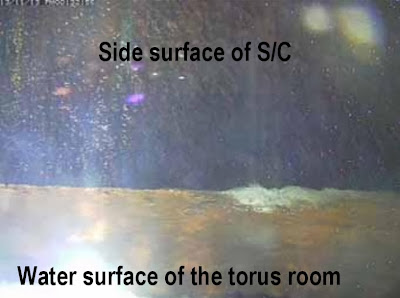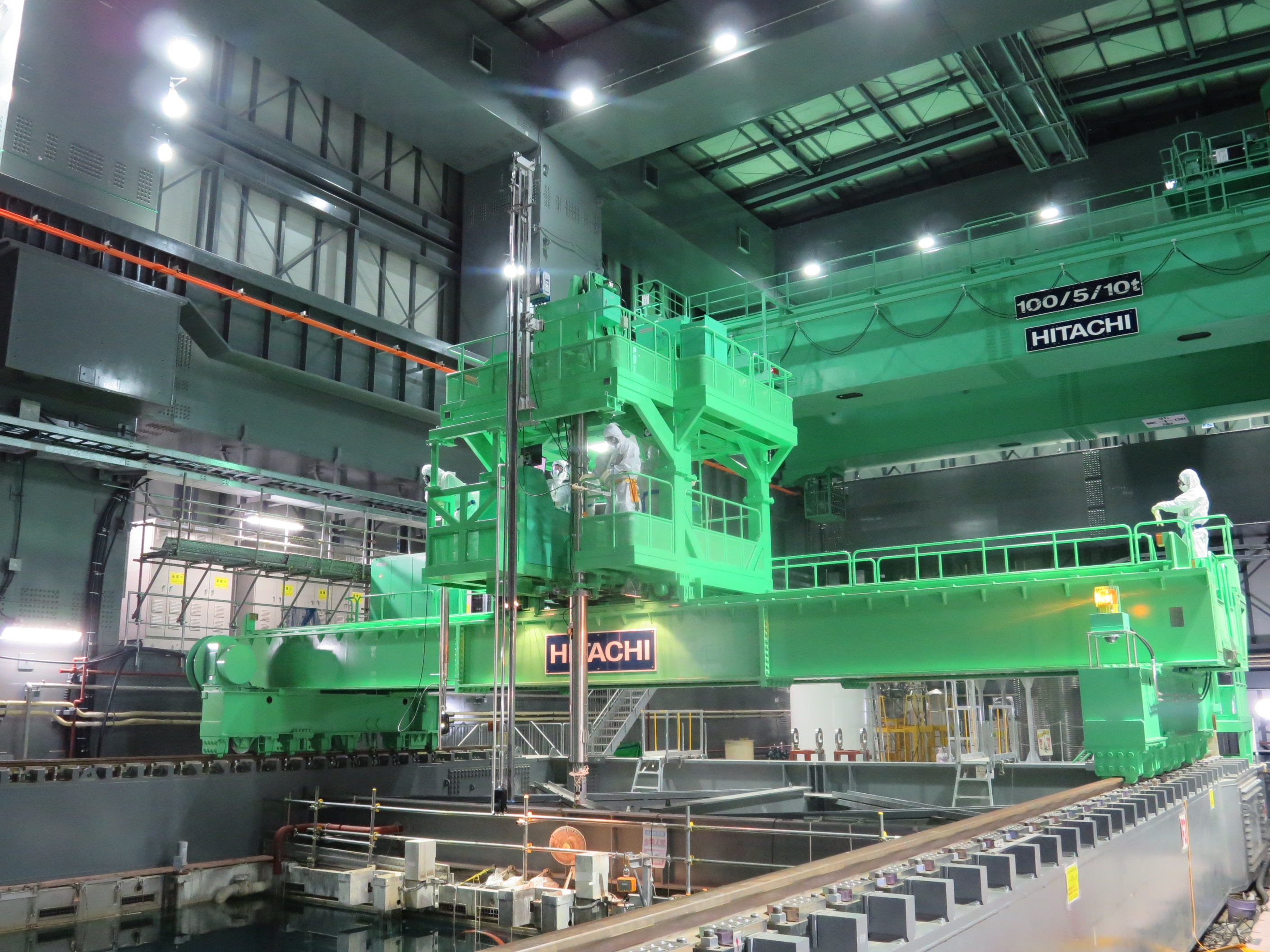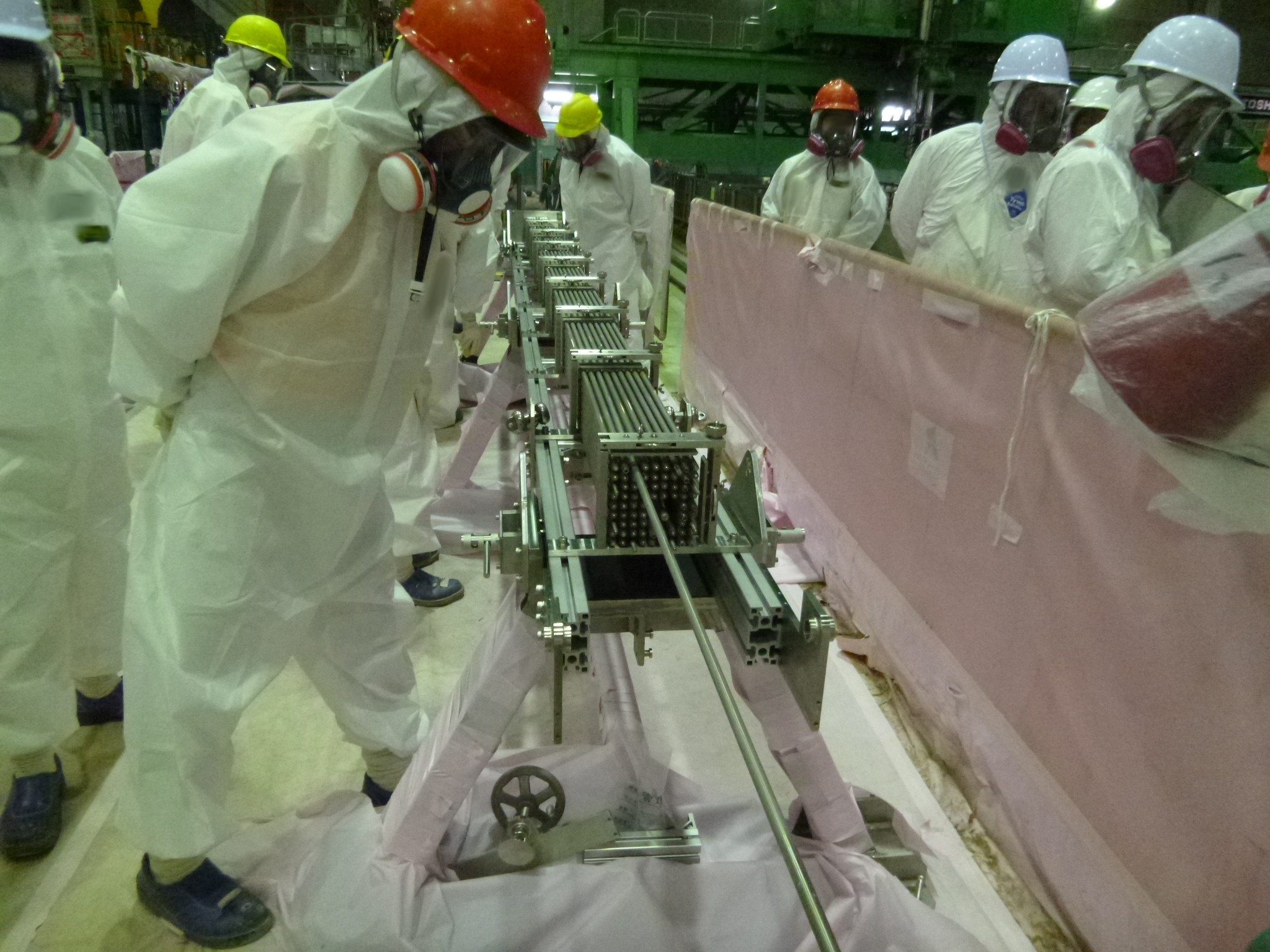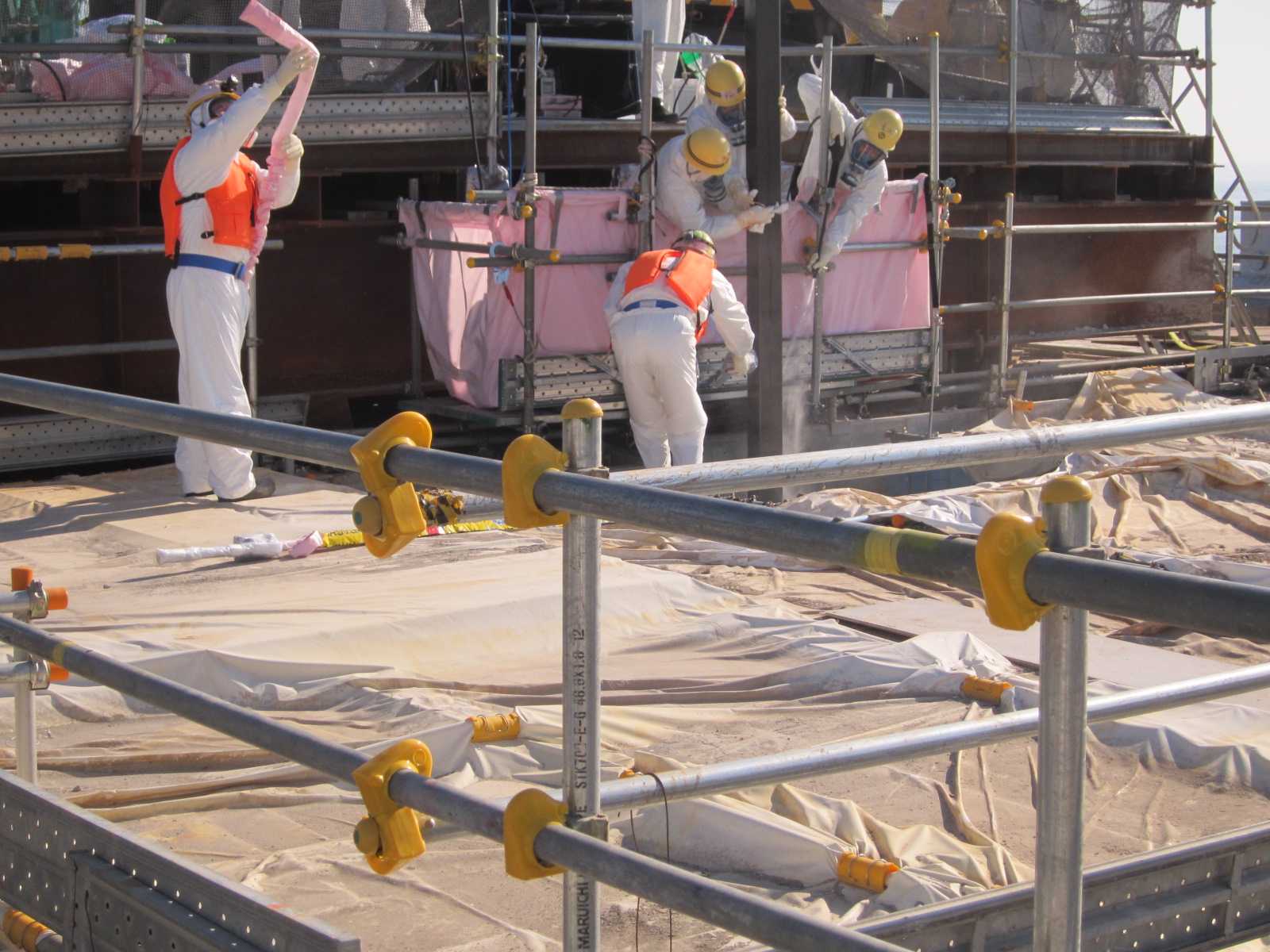Move over, three fuel assemblies with damaged/deformed fuel rods inside in the Reactor 4 Spent Fuel Pool! You're nothing.
According to Kahoku Shinpo, a Fukushima local paper, TEPCO admitted on November 15, 2013 that there are 70 fuel assemblies with damaged fuel rods in the Reactor 1 Spent Fuel Pool, located on the operating floor (top floor) of the reactor building whose air radiation levels are measured in millisievert/hour and sievert/hour (first floor).
There are also three such fuel assemblies in the Reactor 2 SFP, and four of them in the Reactor 3 SFP.
Total 80 spent fuel assemblies in the SFPs in Reactors 1 - 4 are damaged.
The damages had been there long before the March 11, 2011 accident, and TEPCO claims it properly notified the national government as they discovered the damages. But the company has come clean in public only now.
Kahoku Shinpo article below suggests that the oldest of such damaged fuels may have been there for 40 years in the Reactor 1 Spent Fuel Pool. (Reactor 1 started generating electricity in 1971.)
Reactor 1 at Fukushima I Nuke Plant is TEPCO's oldest nuclear reactor; it was entirely the project by General Electric of the US, a turnkey.
From Kahoku Shinpo (11/16/2013):
福島第1原発1号機 燃料震災前破損70体 全体の4分の1
Fukushima I Nuke Plant Reactor 1 has 70 fuel assemblies damaged before the March 11, 2011 disaster, a quarter of the total spent fuel assemblies [in the Spent Fuel Pool of Reactor 1]
福島第1原発1号機の使用済み燃料プール内にある燃料棒70体が東日本大震災前から損傷していたことが15日、分かった。
It was revealed on November 15 that 70 fuel assemblies in the Reactor 1 Spent Fuel Pool at Fukushima I Nuclear Power Plant had had damages before the March 11, 2011 earthquake/tsunami.
プール内に保管されている使用済み燃料292体の4分の1に相当する。損傷した燃料棒を取り出す技術は確立しておらず、2017年にも始まる1号機の燃料取り出し計画や廃炉作業への影響が懸念される。
The damaged assemblies are about one-quarter of the 292 spent fuel assemblies stored in the pool. Technologies to remove damaged fuel haven't been established, and there are worries that [the revelation] may negatively affect the plan to remove the fuels from Reactor 1 [SFP] starting 2017 and the decommissioning work in general.
東京電力は、15日まで事実関係を公表してこなかった。同社は「国への報告は随時してきた」と説明している。
TEPCO hadn't disclosed all the facts until November 15. The company says it had reported to the national government as required.
東電によると70体の燃料棒は、小さな穴が空いて放射性物質が漏れ出すなどトラブルが相次いだため、原子炉から取り出してプール内に別に保管していたという。
According to TEPCO, these 70 fuel assemblies had series of problems including leakage of radioactive materials from small [pinhole-size] holes [on fuel rods]. So the company removed them from the reactor and stored in a separate location inside the Spent Fuel Pool.
18日に燃料取り出しが始まる4号機プール内にも損傷した燃料棒が3体あり、東電は通常の取り出しが困難なため、対応を後回しにしている。
There are three damaged fuel assemblies inside the Reactor 4 Spent Fuel Pool, where the removal of the fuel assemblies will start on November 18. TEPCO has postponed the removal of the damaged assemblies as it is difficult to remove them in a normal manner.
損傷した燃料棒は1、4号機プールのほかにも2号機プールに3体、3号機プールに4体の計80体ある。東電は専用の輸送容器を新たに製造するなど対応策を検討する。
Other than in the Spent Fuel Pools of Reactor 1 and Reactor 4, the Reactor 2 Spent Fuel Pool has three damaged fuel assemblies, and the Reactor 3 Spent Fuel Pool has four, making the total of damaged fuel assemblies 80. TEPCO will consider the measures such as building a dedicated container for transfer for these damaged fuels.
損傷燃料が1号機に集中している理由について、東電は「1号機は当社で最も古い原発で、燃料棒の製造時、品質管理に問題があり粗悪品が多かったと聞いている。2号機以降は燃料棒の改良が進み、品質は改善した」と説明した。
As to the reason why Reactor 1 has the largest number of damaged fuels, TEPCO says, "Reactor 1 [at Fukushima I Nuke Plant] is the oldest nuclear reactor of our company, and we hear that there were quality control issues when the fuel rods were manufactured and that there were many fuel rods with inferior quality. From Reactor 2 onward, much improvement was done on the fuel rods, and quality improved."
1号機は東電初の原発で、1971年3月に商業運転を開始した。
Reactor 1 at Fukushima I Nuke Plant is the first nuclear reactor for TEPCO, and it started the commercial operation in March 1971.
No major national newspaper has covered this story so far.
















 Tokyo Time
Tokyo Time
![[Most Recent Quotes from www.kitco.com]](http://www.kitconet.com/charts/metals/gold/t24_au_en_usoz_2.gif)

